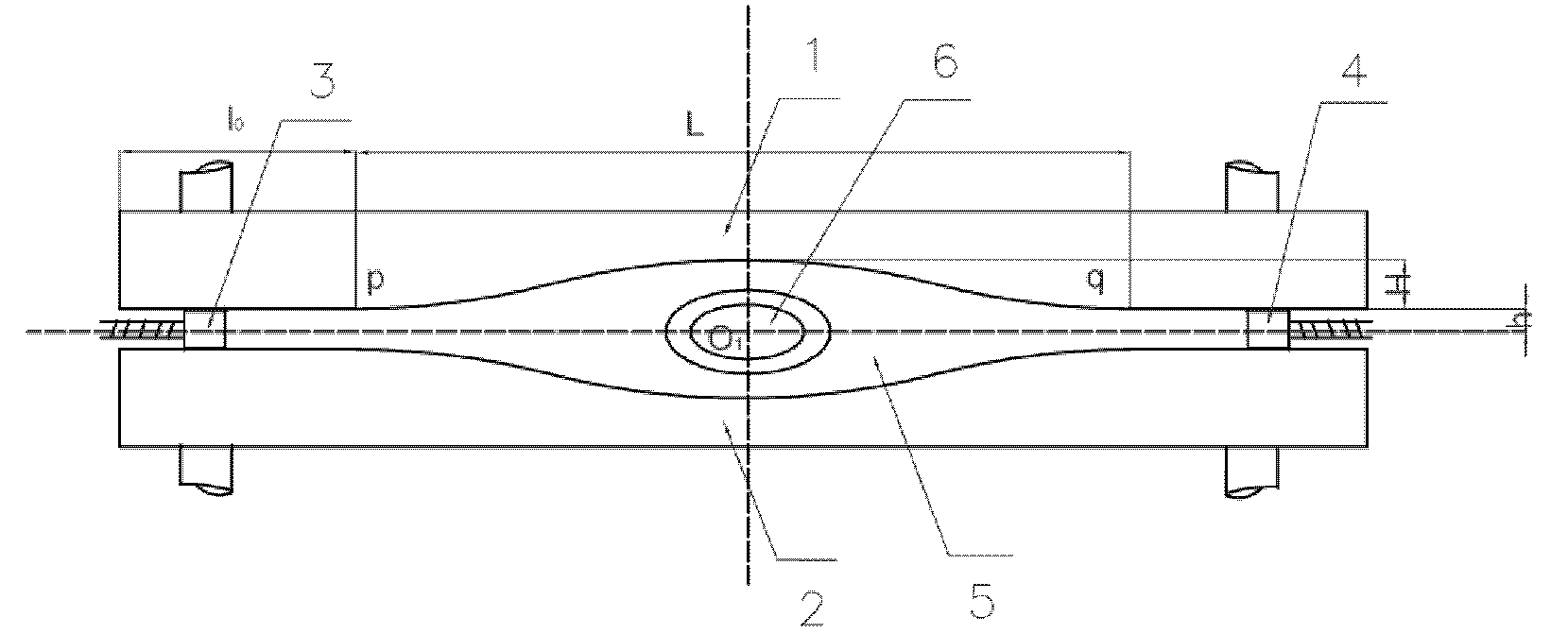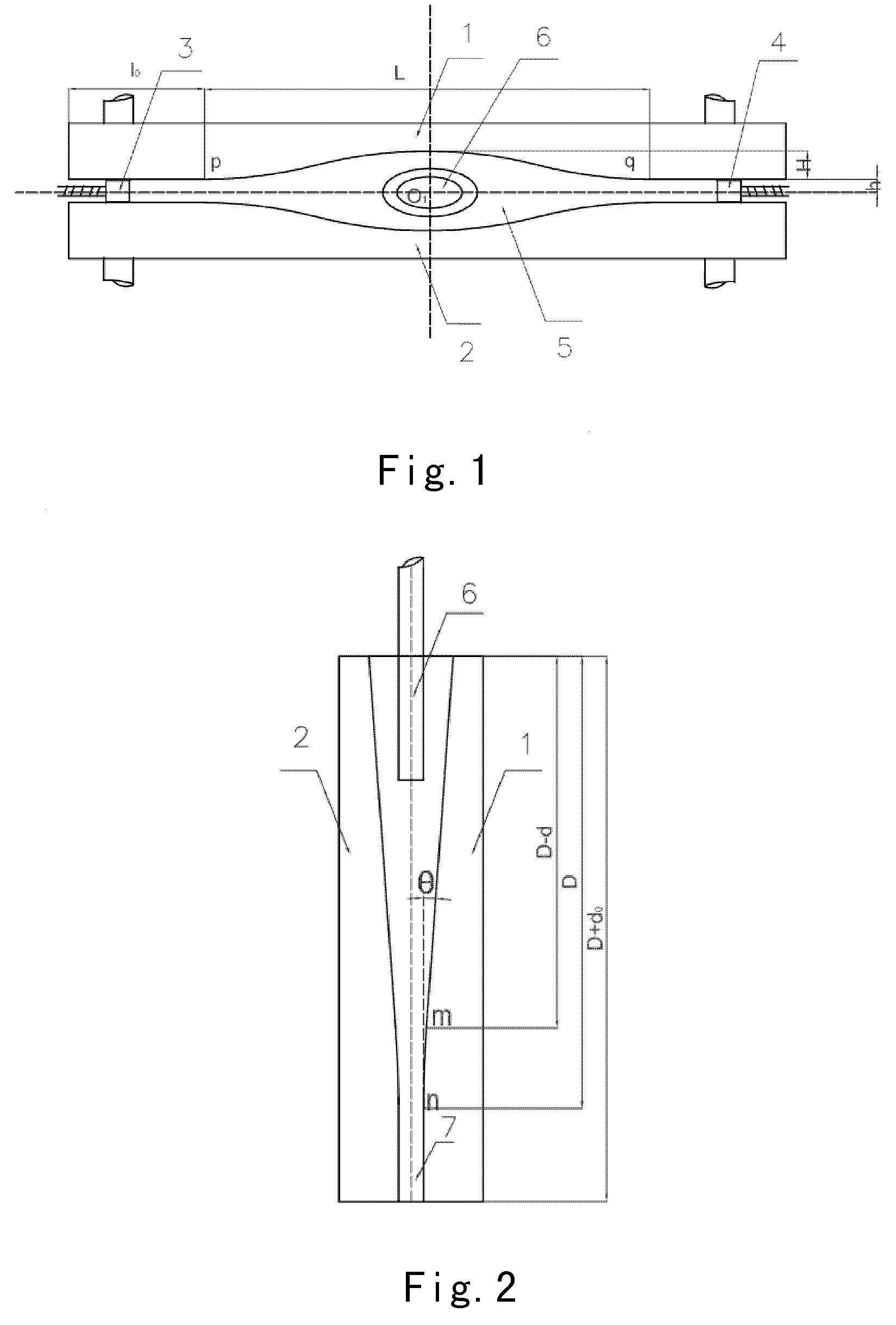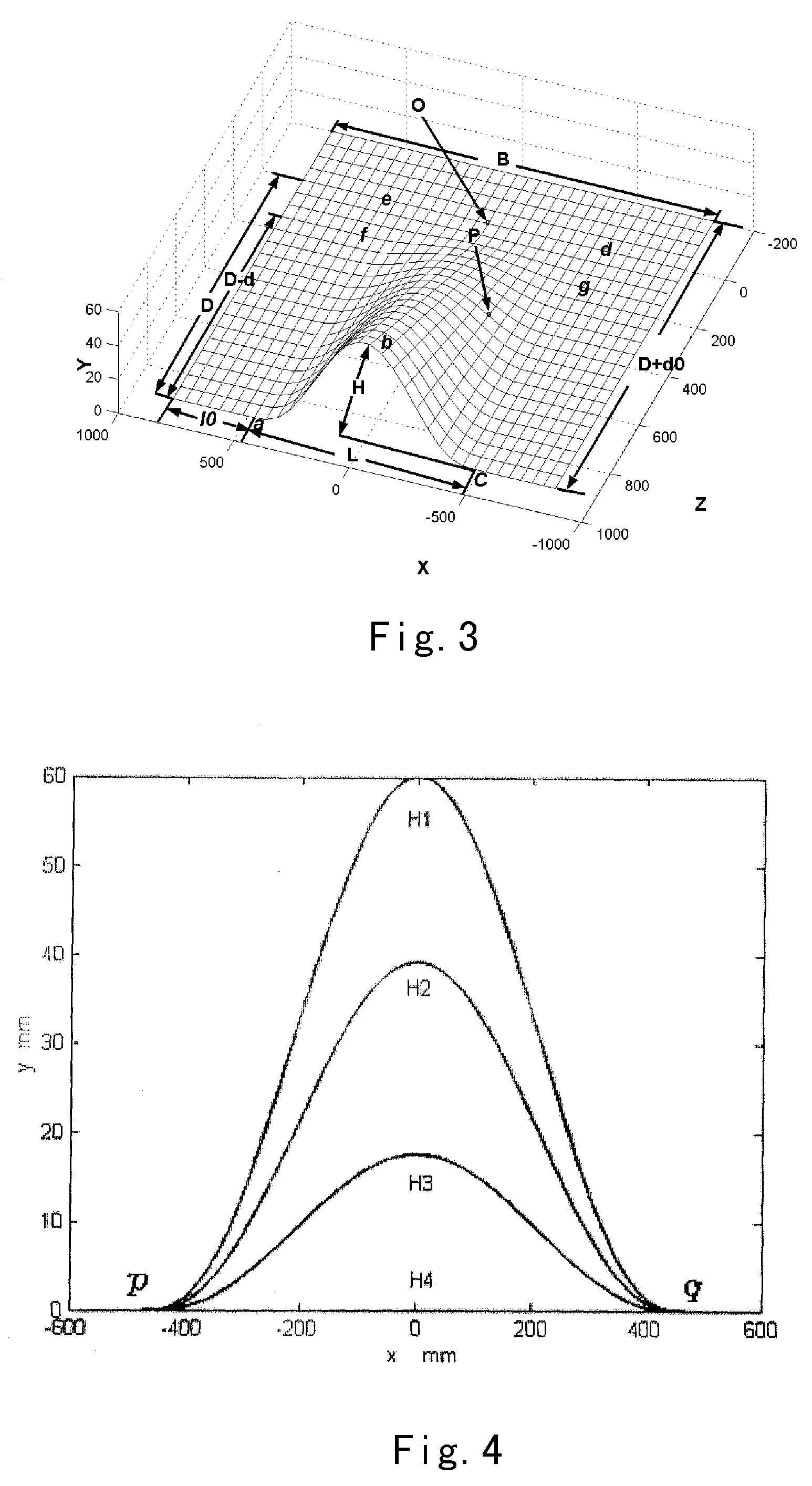Water-cooling mold for metal continuous casting
a mold and continuous technology, applied in the direction of molds, can solve the problems of slab surface defect, slab shell cracking, slab shrinkage and deformation in the direction of casting direction, etc., to reduce the uneven wear of the mold, eliminate the defect of the slab surface, and improve the effect of mold quality
- Summary
- Abstract
- Description
- Claims
- Application Information
AI Technical Summary
Benefits of technology
Problems solved by technology
Method used
Image
Examples
Embodiment Construction
[0058]The invention now is described in detail in a preferred embodiment in reference to the drawings for better understanding its method, features and effects.
[0059]Referring to FIGS. 1 and 2, the TCC mold of the invention is composed of two water-cooled wide copper plates 1, 2 which are opposite to each other in front and back direction and two water-cooled narrow copper plates 3, 4 which are opposite to each other in right and left direction. The water-cooled wide copper plates 1, 2 both include an upper portion and a lower portion. The two lower portions have vertical planar surfaces with a space between them (they are the planar portions of the lower portions of the water-cooled wide copper plates), nevertheless, the vertical planar surfaces can be omitted. The two upper portions have inclined curved surfaces which are open upwards and outwards with a biggest inclination angle θ being less than 12°. The two water-cooled narrow copper plates 3, 4 are flat plates opposite to each...
PUM
| Property | Measurement | Unit |
|---|---|---|
| inclination angle | aaaaa | aaaaa |
| length | aaaaa | aaaaa |
| length | aaaaa | aaaaa |
Abstract
Description
Claims
Application Information
 Login to View More
Login to View More - R&D
- Intellectual Property
- Life Sciences
- Materials
- Tech Scout
- Unparalleled Data Quality
- Higher Quality Content
- 60% Fewer Hallucinations
Browse by: Latest US Patents, China's latest patents, Technical Efficacy Thesaurus, Application Domain, Technology Topic, Popular Technical Reports.
© 2025 PatSnap. All rights reserved.Legal|Privacy policy|Modern Slavery Act Transparency Statement|Sitemap|About US| Contact US: help@patsnap.com



